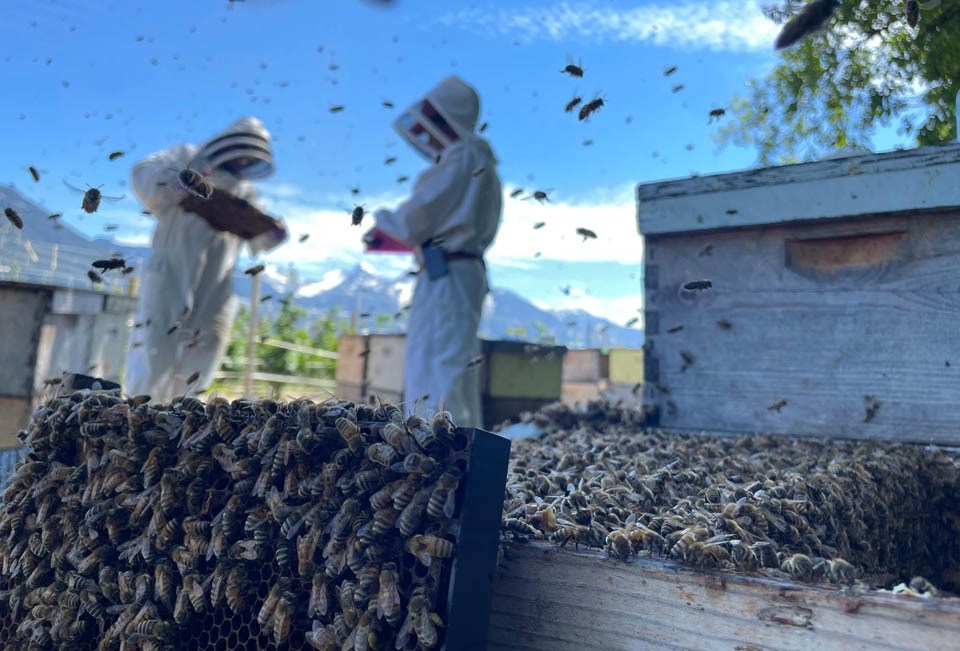SASKATOON — For the past 11 years, the University of Saskatchewan’s (USask) Images of Research contest has showcased the stunning research, scholarly and artistic work of USask staff, students, faculty and alumni. From honeybee yards to the hidden universe inside ourselves, this year’s contest captured the essence of USask research in eight winning photographs.
Organized by USask’s Research Profile and Impact team, the Images of Research contest is an annual celebration of the beauty, diversity and impact of USask research. This year’s contest featured nearly 100 entries across five categories, with winning images selected by judges on seven multi-disciplinary panels. Viewers’ Choice was decided by more than 1,500 public votes. The contest was viewed online nearly 20,000 times. The submitted images represent the research, scholarly and artistic works of 11 USask colleges and schools.
With intimate insight into artistic journeys, the vastness of field work, our close relationships with animals and communities, and stunning microscopic points-of-view, this year’s entries honour the many sides of USask research.
View all winning and runner-up images and all 2025 submissions .
Grand Prize: "A Busy Day in a BC Bee Yard"
Submitted by: Maria Janser, Undergraduate student, Western College of Veterinary Medicine
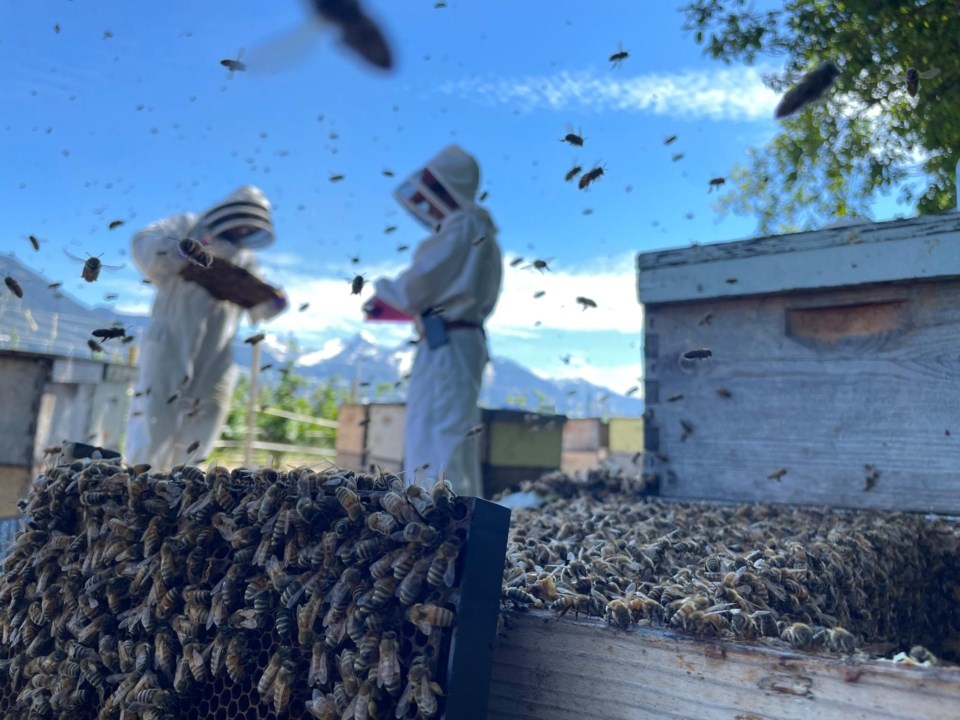
An early day of field work in a honeybee yard that is pollinating a nearby cranberry field. This farmland is nestled in a valley surrounded by snow-capped mountain peaks. The sun glistens on the mountains and the bees fly frantically across the image. The foreground of the picture gives a window into an open colony, highlighting the bees on an individual frame. In the distance, a pair of researchers are analyzing frames for disease, strength and health. This image captures the frenzy and the beauty of honeybee field research.
Arts in Focus: "Silent Inheritance: The Multigenerational Effects of Arsenic"
Submitted by: Mahesh Rachamalla, PhD student, Department of Biology, College of Arts and Science
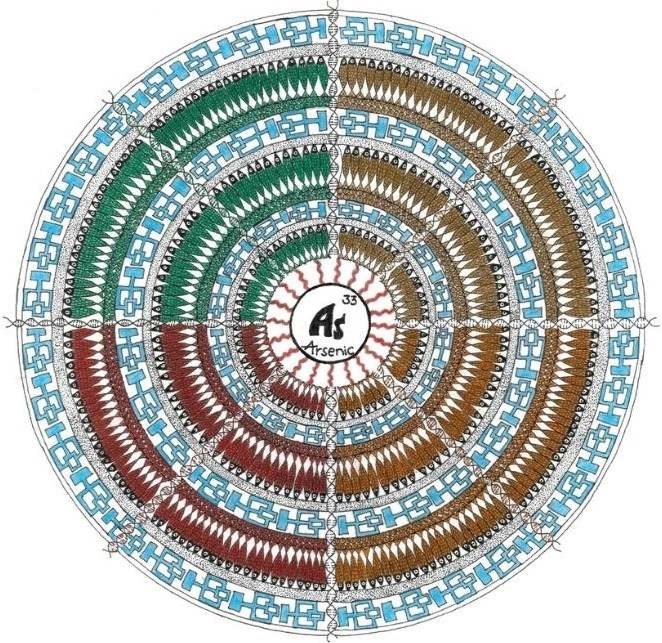
This mandala art vividly illustrates the transgenerational impact of arsenic toxicity, revealing how chronic exposure in zebrafish induces cognitive impairments that persist for up to three generations. The color scheme represents varying arsenic doses: green for control, while gray and red indicate increasing exposure levels. At the core, the maze-like pattern reflects the behavioral test used to assess learning and memory, while the interwoven DNA strands symbolize how these effects are inherited through epigenetic modifications, particularly altered DNA methylation patterns. This artwork serves as a compelling reminder that environmental toxins do not merely affect individuals, they shape the neurological and cognitive health of future generations, underscoring the long-term and often unseen consequences of pollution.
Community Impact: "Wînipekw on the Rising"
Submitted by: Lindsay Carlson, PhD student, Department of Biology, College of Arts and Science
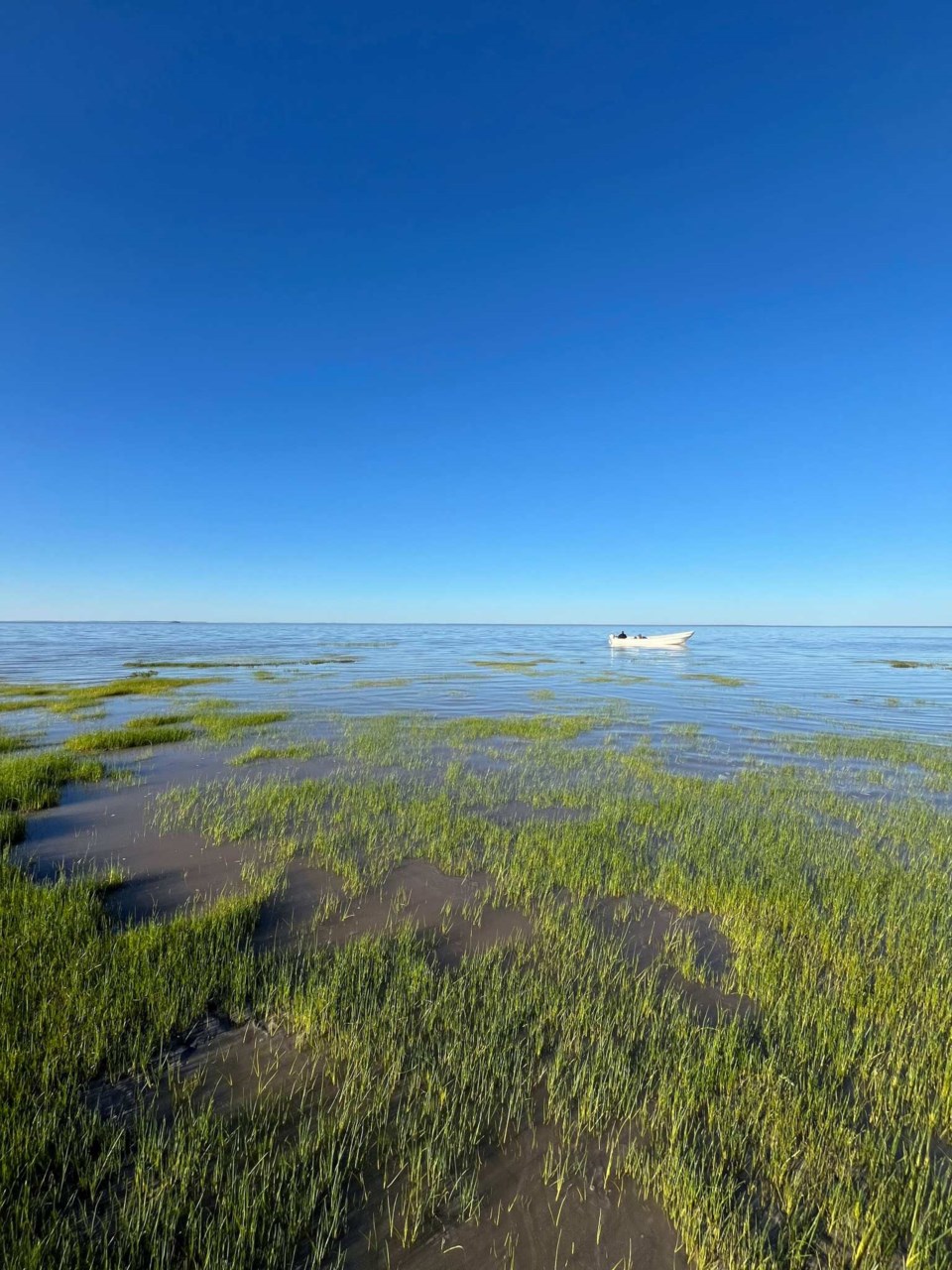
Nearly half a century after work began on the James Bay hydroelectric project, the Eeyou (Crees of Northern Quebec) are working to understand how hydroelectric development and the region’s rapid isostatic rebound are affecting the plants and animals of their traditional territory. Spring goose break is perhaps the most important Eeyou cultural activity, and hunters have noticed a decline in waterfowl passing through each season. USask partnered with land users, tallymen, and regional agencies to understand how goose habitat quality and habitat use has shifted following drastic changes to the bay. Cree land user, Dwayne Wistchee, keeps his boat in deeper water while I sample intertidal vegetation used by staging waterfowl on a rising tide.
More than Meets the Eye: "The Hidden Universe Inside Us"
Submitted by: Asmaa Fadl, PhD student, College of Dentistry
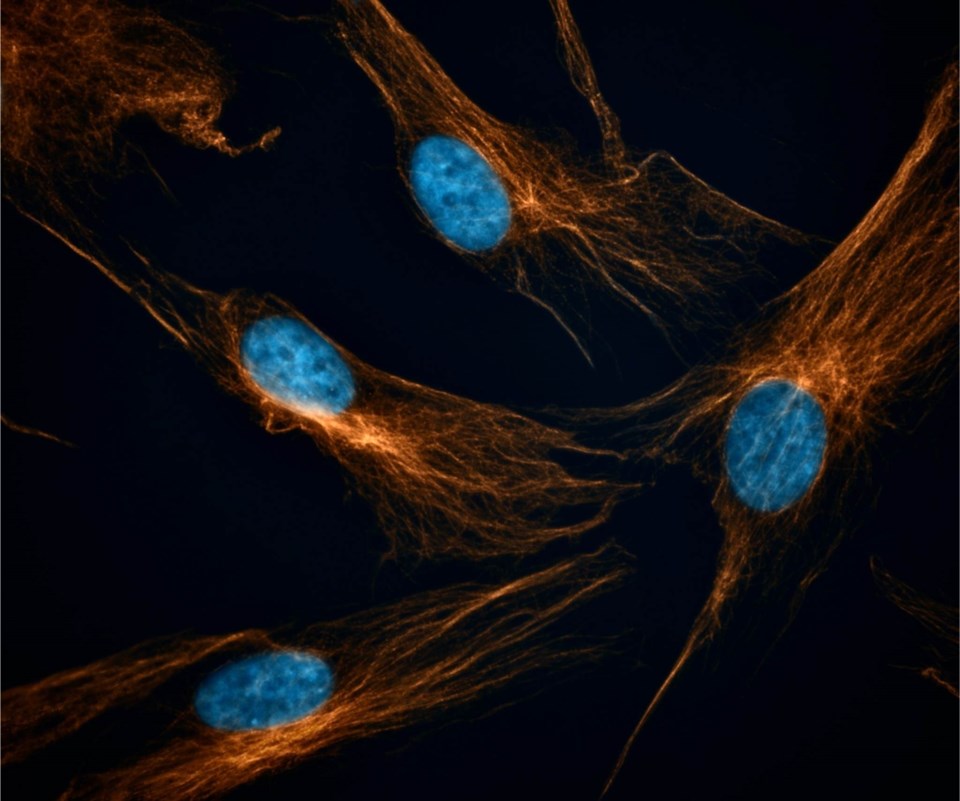
“You think you are a small entity, but within you is enfolded the entire universe”– Rumi. What we see under a microscope can be just as vast and complex as the universe itself. This fluorescence microscopy image captures human gingival fibroblasts, the main cells that build connective tissue in the gums. β-Tubulin (orange), a structural protein, forms the cellular framework, stretching like distant galaxies, while the nuclei (blue) resemble scattered stars. This microscopic landscape mirrors the infinite patterns of the cosmos within the fundamental building blocks of our bodies. Beyond its striking resemblance, this image reveals key insights into the structure and behaviour of fibroblasts in diseases like fibrosis and cancer, deepening our knowledge and ultimately guiding new treatment approaches.
Research in Action: "The Invisible Bond: Research and Empathy"
Submitted by: Angie Magana, PhD student, Department of Veterinary Pathology, Western College of Veterinary Medicine
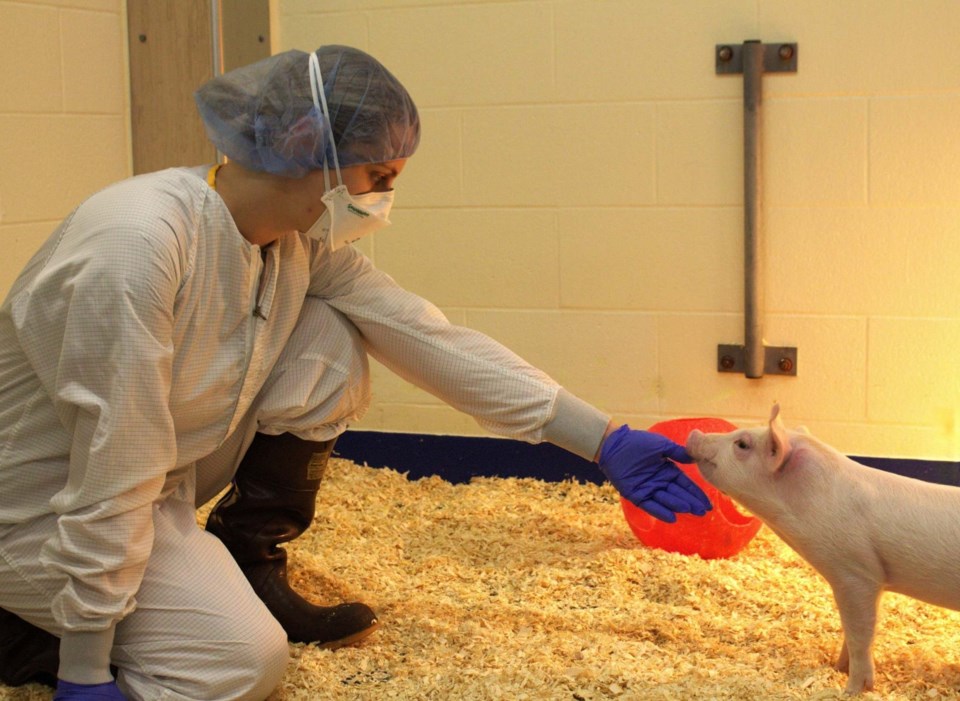
This image captures a moment of deep connection between a researcher who faces the challenge of obtaining answers to scientific questions while providing the best care to an animal. Animal welfare and ethics are the foundation of our entire process, from the planning and execution of the experiment to the results interpretation. Our priority as a researcher is to always provide a safe and enriched environment that keeps our animals in the best possible mood and health. This research aims to understand how maternal derived antibodies protect piglets against the swine influenza virus.
From the Field: "Subarctic Secrets: What Water Samples Reveal About Changing Carbon Flow"
Submitted by: Aram Jalali Bouraban, PhD student, School of Environment and Sustainability
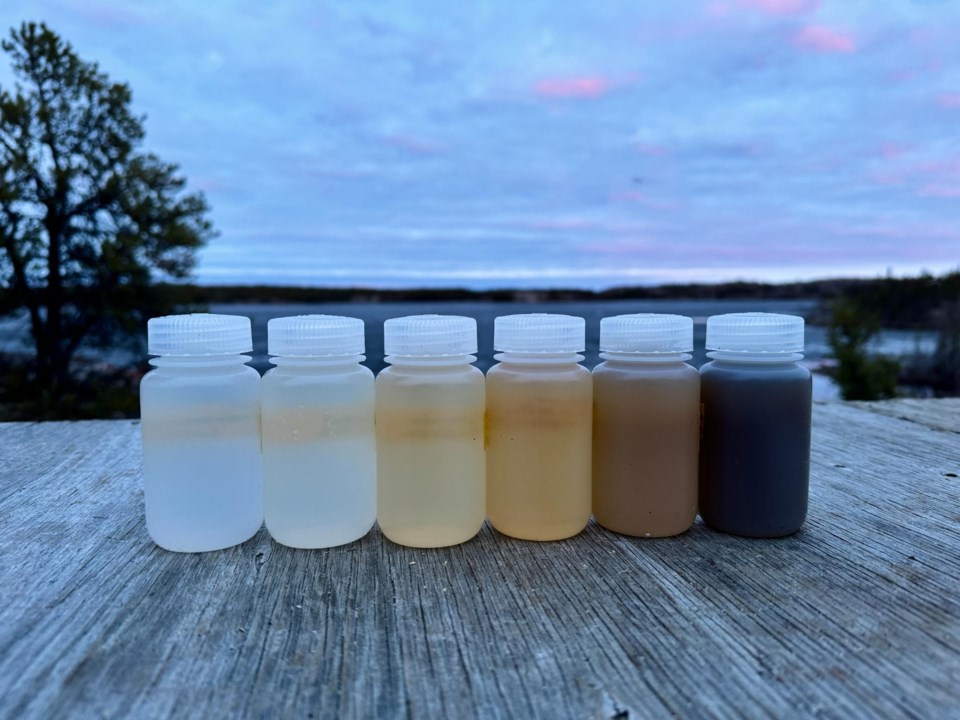
These water samples are more than just different shades; they tell the story of how Arctic and subarctic landscapes release carbon as water flows into streams. As rainwater flows through rocky slopes, peatlands, and forests in the Taiga Shield ecoregion of N.W.T., it gathers dissolved carbon and carries it into rivers and lakes. Darker samples come from carbon-rich peatlands, while clearer ones suggest water from forest soil, lakes, or precipitation. But as the region warms, shifting water pathways are changing how much carbon landscapes send to streams and lakes—potentially increasing carbon release into the atmosphere, accelerating climate change, and posing a threat to regional and global sustainability.
Best Description: "Frozen in Time: Teeth that Never Came to Bite"
Submitted by: Amalya Babayan, Master’s student, Department of Anatomy, Physiology and Pharmacology, College of Medicine
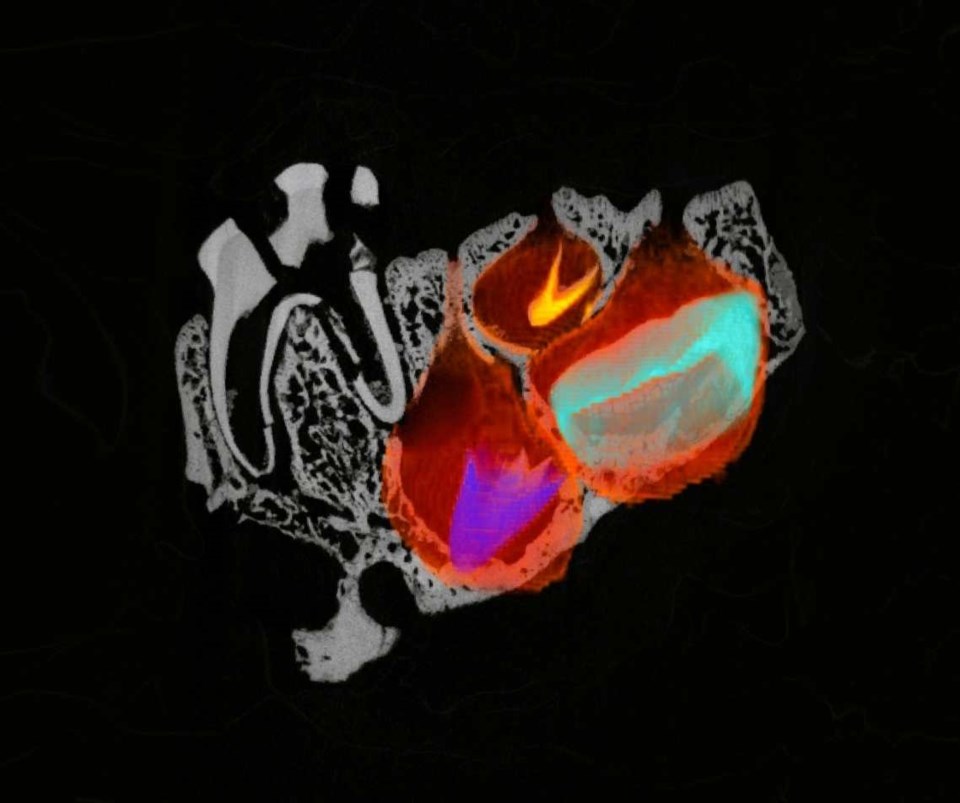
Two million years ago, a child was growing—until time stopped. This CT scan captures the arrested development of a young Paranthropus robustus, revealing the hidden world inside its fossilized jaw. The red pockets trace the spaces carved in jawbone, with eruption paths stretching and tunnelling towards the surface. The cyan, yellow, and violet shapes—adult incisors and a canine—never emerged. As soft tissue deteriorated, teeth shifted. The tilted teeth sat patiently for two million years, waiting to be discovered. Found in the Cradle of Humankind, this jaw fragment offers a rare glimpse into how our ancestors grew, just as dentists today track kids’ growth based on their tooth development.
Viewers’ Choice: A Breath of Protection!
Submitted by: Mihiprabha Rathnayake, PhD student, Department of Veterinary Pathology, Western College of Veterinary Medicine
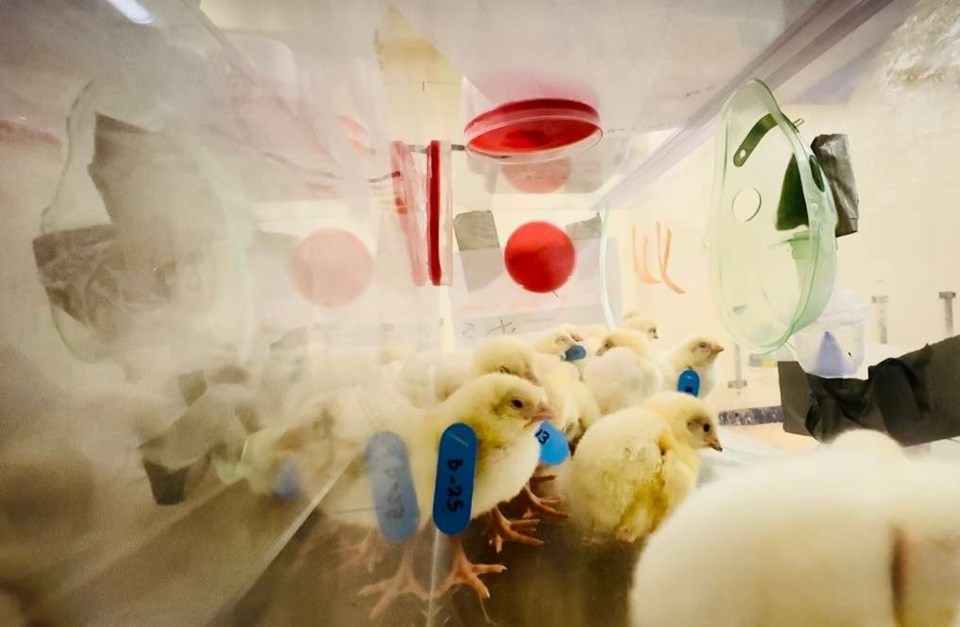
A delicate cloud of mist swirls inside the transparent chamber as a group of fluffy chicks curiously huddled together, receiving their first shield of protection. The soft golden down of the chicks glow under the light as the nebulizer gently disperses a synthetic DNA molecule called CpG-ODN, ensuring each tiny breath carries a promise of immunity. These young lives embark on their journey with a breath of protection, laying the foundation for a healthier life in a world with challenging pathogenic bacteria like E. coli and C. perfringens.
— Submitted by USask Media Relations
